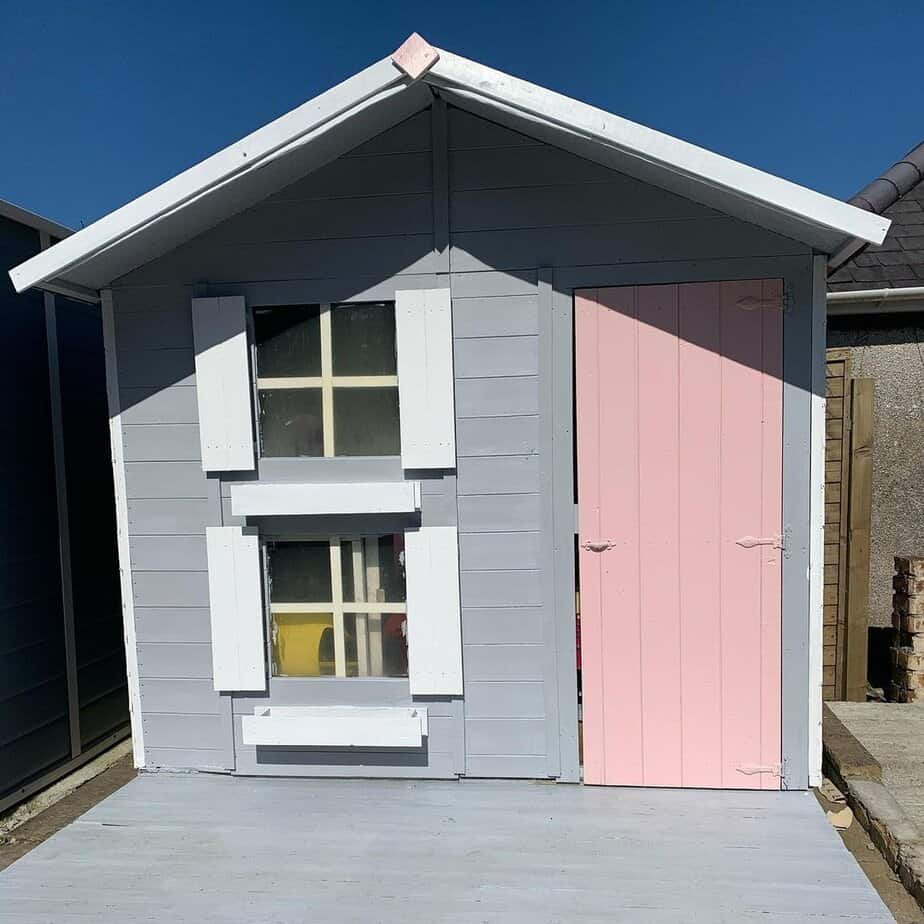Jump to:
Playhouses are fun until the height becomes an issue by overlooking a neighbour’s garden. The playhouse height limit exists to stop disputes and let your kids enjoy their space in peace. Here’s what you need to know.
Playhouse Height Limit Rules

In the UK, playhouses are classed as outbuildings. This means the same planning rules apply as they do for sheds and garden offices. In most cases, you won’t need planning permission if you follow the limits.
However, the rules are strict when it comes to height and position. For one, the building must be single-storey only, including:
- Within 2 metres of a boundary like a fence or neighbour’s wall. The playhouse must not be taller than 2.5 metres at its highest point.
- Further than 2 metres from the boundary. The maximum height goes up to 4 metres if the roof is dual-pitched or 3 metres for any other type of roof.
- Eaves height should be no more than 2.5 metres, no matter where the playhouse is placed.
- Raised platforms or balconies are limited to 30 cm above ground level. A raised playhouse that looks into next door’s garden will need planning permission.
What does this mean for you? As long as your playhouse stays under the 2.5 metre height limit when it’s close to the fence, it’s legal. That remains true even if it happens to overlook a neighbour’s garden. There’s no rule against ‘overlooking,’ but height and position limits are set to:
- Keep buildings in proportion with gardens
- Avoid overshadowing or blocking light
- Prevent raised platforms from giving a direct line of sight into neighbouring gardens
- Stop garden structures from becoming overbearing
What About Tower and Two-Storey Playhouses?
Tower playhouses and two-storey playhouses fall under stricter rules than standard garden playhouses.
Tower playhouses
This type features a raised design on stilts or a frame by default. Now, if the platform is more than 30 cm above the ground, they’re classed as “raised structures.” Under permitted development, raised platforms over this height require planning permission. In practice, your local authority might see the playhouse as a child’s toy and decide planning permission is unnecessary — but always check, don’t just assume. There have been cases of takedown orders against climbing frames due to this rule.
Two-storey playhouses
As mentioned, the rules for outbuildings say they must be single-storey only. A two-storey playhouse probably won’t qualify as permitted development—enter planning permission. Councils are likely to scrutinise the height, size, and effect on neighbours.
Party Wall and Boundary Rules
The Party Wall Act only comes into play if the playhouse touches or affects a shared wall. This could be a brick wall that sits on the boundary. In that case, you need to give your neighbour formal notice. They may also request a Party Wall Agreement before work commences.
For most playhouses, the rules are simple. Put it near a fence, stay under the height limit, and you won’t need to deal with the Party Wall Act.
Note: Keep in mind that this doesn’t apply to fences or hedges. A wooden fence between two gardens isn’t covered by the Act.
Talk to Your Neighbour
Just because you’re allowed to put up a playhouse near the fence, doesn’t mean your neighbour can’t be upset about it. So, to avoid arguments later, have a quick chat with your neighbour. Let them know you’re putting up a playhouse and where it will sit to stay on good terms. If it goes over the playhouse height limits, you’ll need planning permission. Not only that, but the council might notify your neighbour.
Talking to them beforehand won’t replace the legal process. It simply means that no one gets caught off guard, and everything goes smoothly.





